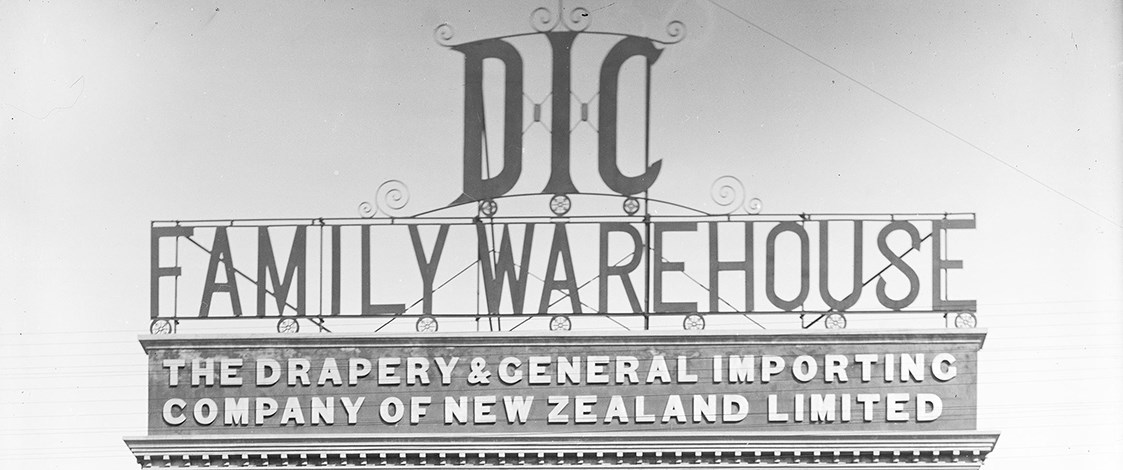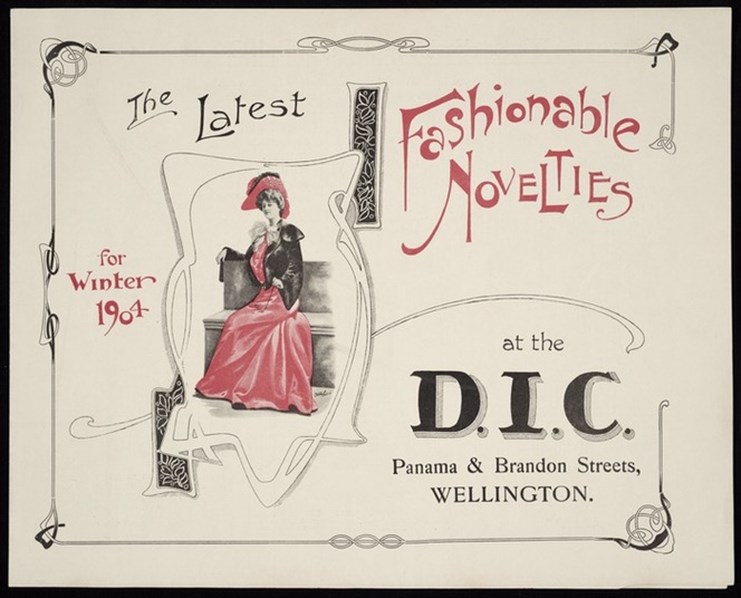Stories
The DIC
1884-1980s

Bendix Hallenstein was born in 1835 in Germany, where his parents owned a mill producing woollen cloth from rags. As a young man he crossed the North Sea to Manchester, and then in 1857 he and his two brothers sailed for the goldfields of Victoria, Australia.
In Australia the Hallenstein brothers were more interested selling goods to miners than in gold panning, and established a wine and spirit and general importing business in Melbourne. After nine years they decided to extend to the southern regions of New Zealand. As a result, by mid-1863 Bendix Hallenstein was managing a recently opened branch of the company in Dee Street, Invercargill, stocking staple foodstuffs and a large selection of equipment and clothing for miners.
Business grew and Bendix Hallenstein soon established general stores elsewhere in the region, in Arrowtown, Cromwell and Lawrence. In addition he also served as mayor of Queenstown, from 1869-72, and as Member of the House of Representatives for Wakatipu in 1872-3.
It was also in 1873 that Bendix Hallenstein, along with his brothers, established the New Zealand Clothing Factory in Dunedin. Now needing outlets for his manufactured goods he began buying his own shops, the first in Dunedin in 1876. Others soon followed, in Christchurch, Timaru, Wellington and Oamaru, operating under the banner of Hallenstein Bros., and by 1900 there were 34 such shops around the country.
In 1884 Bendix Hallenstein also founded the Drapery and General Importing Company of New Zealand (later known as the DIC) in Dunedin. With himself as chairman of directors and other members of the Hallenstein family in management roles, the business was floated with a capital of £125,000. It was founded somewhat on the principle of the co-operative civil service stores in Britain, where shareholders participated in the profits. The stated aim of the company was to establish a wholesale and family warehouse, importing from Britain those goods that could not, at that stage, be manufactured in New Zealand.
The Drapery and General Importing Co. opened for business in High Street, Dunedin, on 22 May 1884. It claimed to be a 'bona fide wholesale warehouse', offering an average savings of 'not less than 30 percent', and its various departments included a dressmaking service, under the supervision of 'an experienced lady' who had previously held responsible positions in London and Edinburgh.
Within a few days of opening the Drapery and General Importing Co. had to increase staff numbers in all departments to cope with the number of customers. By September 1884 stocks were running low, but were saved by two shipments from Britain of new and fashionable goods, while the company was now also enlarging its Dunedin premises with a new four-storey extension.
The Dunedin head office, principal warehouse and showrooms had a floor space equal to an acre and a half (0,6 hectares) and in addition to clothing and mercery - hats and caps, general Manchester, flannels and blankets, shirts, haberdashery and trimmings, gloves, ribbons and laces – the company stocked a wide range of household goods, from carpets and linoleums to crockery, ironmongery, furniture and furnishings. It also had a refreshment room, and well-lit dressing and fitting rooms.

An illustrated pamphlet showing women's winter fashions at the DIC, 1904. Courtesy of Alexander Turnbull Library, Eph-B-COSTUME-1904-01.
In 1885 the company established a branch in Christchurch, and in 1891 opened a store in Wellington, followed by others in Lower Hutt, Whanganui and Invercargill. The Wellington premises were rebuilt in 1929, occupying a whole block on Lambton Quay, and this 'one-stop' store included a restaurant and coffee bars, while among additions made in the mid-1960s were a travel bureau, ladies’ hairdressing salon, and a 'mothers and babies room'.
In 1929 the Wellington DIC was rebuilt to occupy an entire block on Lambton Quay. Photos by the Evening Post, courtesy of Alexander Turnbull Library, 1/4-015034-F and EP/1958/3577-F.
By now the DIC also was enjoying buying arrangements with David Jones Ltd of Sydney, Australia, and Milne & Choyce in Auckland, in order to source the widest possible range of goods for its New Zealand customers. The chain continued to grow, and in the mid-1970s the DIC had nine branches: in Hamilton, Invercargill, Whanganui, Palmerston North, Wellington, Christchurch, Dunedin, Te Awamutu, and Lower Hutt.

Models on the catwalk of a lingerie show at the DIC. Photo by the Evening Post, 22 October 1958, courtesy of Alexander Turnbull Library, EP/1958/3577-F.
But by now department stores generally were facing some new and serious challenges, in particular the growth of suburban shopping malls. Although the DIC chain underwent some further expansion, growing to 16 stores around the country, in the period 1987-8 it was taken over by one of its main rivals, Arthur Barnett, which had begun in Dunedin in 1903. This merger proved unsuccessful, and by 1992 the DIC stores had been closed and their assets disposed of. The Arthur Barnett name survived until 2015 when its final store, in Dunedin, was sold to yet another department chain, the Invercargill-based H&J Smith.
Although the DIC brand has disappeared – along with other department store chains such as Milne & Choyce and Arthur Barnett – one of the legacies of its founder survives. In 1987 Hallenstein Bros. merged with Glassons (which began in Christchurch in 1918) to become part of New Zealand’s largest clothing company.
Text by Richard Wolfe. Banner image by Burton Brothers Studio, courtesy of Museum of New Zealand Te Papa Tongarewa C.011519.
Last published May 2017.